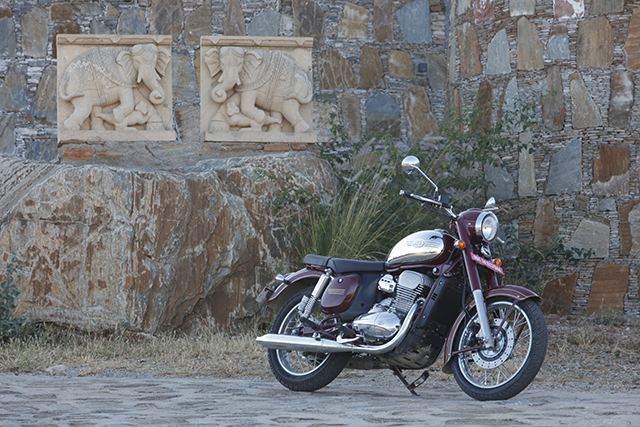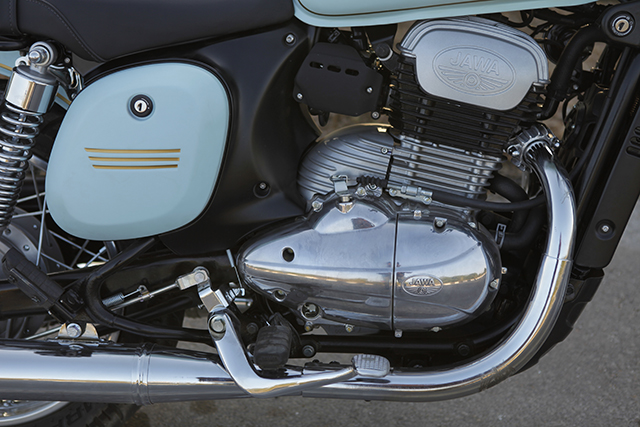
The company spent a lot of time researching about the styling of the original bike and it was during this research that they came to the conclusion of providing the customers with a motorcycle that takes them on a nostalgic trip. Back in the day, Jawas were a common sight and even today there are many clubs and enthusiasts who can been seen riding their old Jawas proudly. This is exactly what the new bike does as the design is quite close to that of the original motorcycle. The low and long stance, flat seat, side panels, fuel tank, spoke wheels, chromed twin shocks, and the front fork all come together to evoke nostalgia. The Forty Two, however, carries a dark theme with a blacked-out fork cover, a flatter and wider handlebar, and a single reverse speedometer. Styling is one of the key elements that will help the company pull in more customers.
So, the styling is sorted. Well, at least for those who love the retro vibe. Moving on to the performance, then. To begin with, the very first thing that I realised when I thumbed the starter button and the engine came to life, was the vibration At idle, vibration isn’t bothersome, however, as you throttle up and start moving, it only gets stronger. The vibration somewhat reduces at 80 km/h but beyond that it gets crazy again. This clearly indicates that there is a scope for improvement when it comes to refinement because, currently, it isn’t up to the mark. Next up are the low- and mid-range acceleration, which are good and make the Jawa easy to ride. The six-speed gearbox is smooth and the shifts are precise. Fuelling of both the bikes is good. There are no jerks or an on-off feel from the throttle. I liked the way the bike accelerated, however, the vibration does tend to dampen the fun. In fact, the vibration is the strongest once you cross 100 km/h, which makes high-speed cruising a bothersome affair.



Leave a Reply